Nestor Makhno. The Last Years of Living Abroad
11/5/2021
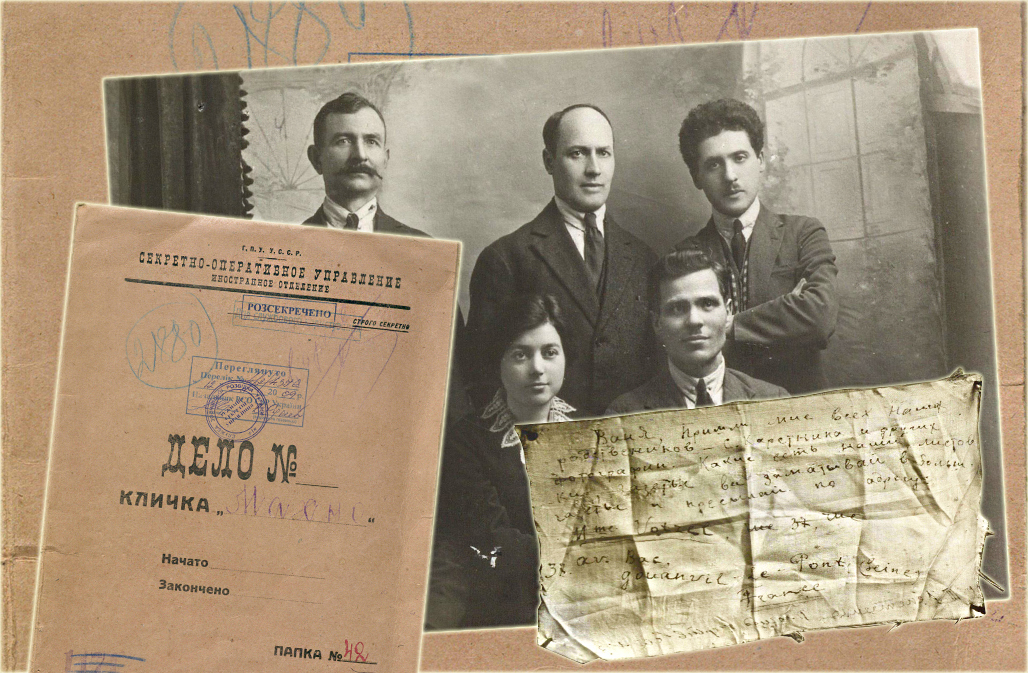
The Branch State Archive of the Foreign Intelligence Service of Ukraine contains a selection of materials from the Foreign Department of the Secret Political Department of the GPU of the Ukrainian SSR, which makes it possible to trace the activities of Nestor Makhno in the last years of his life in exile. And although at that time, in the 1930s, Makhno no longer posed a real threat to Soviet power, its special services continued investigations against him and his immediate environment, recruiting agents from former Makhnovists for deportation.
Territorial subdivisions of the GPU of the Ukrainian SSR in Odesa, Zaporizhia, Dnipropetrovsk, Kharkiv, and Mariupol worked most actively on Makhno and Makhnovists. That is, where most of the soldiers of the so-called Revolutionary Insurgent Army lived, the number of whom, according to operational documents of the GPU, reached 65,000, and in some periods even 100,000 people. After the Insurgent Otaman with a few remnants of his army found refuge in Romania and later moved to Poland, in addition to counterintelligence units, the Foreign Branch of the GPU of the Ukrainian SSR began to work against him. After all, Romania and Poland were the main countries of responsibility for the central apparatus of Soviet intelligence in Moscow before the intelligence of Soviet Ukraine was created.
Nestor Makhno was on the list of the fiercest enemies of the Soviet government. In this regard, the GPU of the Ukrainian SSR was tasked with penetrating his immediate environment, obtaining information about plans and intentions, luring the Otaman and his associates into the territory of the USSR. The Odesa District Department of the GPU of the Ukrainian SSR at that time conducted a large-scale operation “Violinists”. The operation even planned to physically eliminate Makhno, but he escaped death. Instead, the GPU managed to infiltrate its own agents into his environment, who constantly reported on his actions and movements.

In 1923, according to foreign GPU sources, Makhno and a group of supporters left Romania for Poland. Immediately after crossing the border, they all were detained by the Polish defensive (counterintelligence). Makhno was then held separately in Mokotow Prison.
Taking advantage of the permission to his pregnant wife, Halyna Kuzmenko, to go to Warsaw for treatment, he instructed her to visit the Ukrainian SSR’s Embassy in Poland and begin negotiations on an agreement with Soviet authorities. She did everything as her husband told her. As a result of this visit, on July 29, 1922, the Embassy sent a letter to the People's Commissariat for Foreign Affairs of the Ukrainian SSR:
“July 22, 1922, Makhno's wife Halyna Kuzmenko applied to the Consular Department of our Embassy in order to give her permission to leave for Ukraine to negotiate with the Ukrainian Government on a group of Makhnovists’ return to Ukraine (the application is attached). From direct conversations with her, it became known that there were 16 of them, who were in the internment camp in Strzhalkov. The Polish authorities isolated them from the Petliurists. According to her, the Makhnovists are very dissatisfied with their life in the camp and would like to return home. Their fighting spirit has also disappeared. She (Halyna Kuzmenko) herself seemed overtired and discouraged, she even asked for a little financial help. In conversations, she mentioned several times that Polish officers (including Bilinsky) from the camp administration offered them to leave the camp and be transported to Ukraine, but they did not want to help at the moment - they said that if they did this, they could be helped later. She also hinted in the following direction: “If the Ukrainian government gave us at least a little help with money (some 300,000 or 400,000 Polish marks) and 6 to 8 revolvers, we could have jumped out of the camp and run to Hutsul region and Galicia.
In this way, the Ukrainian government would be covered and would have accusations against the Polish government, which did not extradite Makhno some time earlier. Kuzmenko kept returning to this topic and emphasized that the issue of the Hutsul region was seriously discussed by them.
For our part, we silently ignored her proposals of this kind and touched only upon what she came for - that is, her return to Ukraine. We said that the Ukrainian government was unlikely to negotiate with them as a group, and that each of them could individually apply for amnesty like all those who had actively fought against the Soviet authorities. Such an answer did not satisfy her, and she asked that her application be sent to the NKVD anyway”. (Central State Archives of Supreme Bodies of Power and Government of Ukraine- F. 4. - Op. 1. - Case 566. - P. 16).
At the end of 1923, Nestor Makhno was released from prison for lack of evidence in preparation for an uprising in western Ukraine with the aim of allegedly further joining the Ukrainian SSR. At the same time, the intensification of the Makhnovists' activities abroad forced the GPU leadership to take additional measures to obtain as complete information as possible about their plans and intentions. The relevant instructions were received by the Foreign Department of the GPU and a representative of the Warsaw residentura of Soviet foreign intelligence.
In early 1924, another report was received from the residentura. Again, a group of Makhnovists asked for permission to return to Ukraine. The resident made his comments: “We believe that these people can be safely allowed to go home. We have every reason to believe that Makhno was sincere in trying to contact the Soviet authorities. He behaved in prison perfectly well and courageously, without compromising anyone, although for the latter he would have been given freedom and more. His people, who had survived Polish prisons, are now strongly in favor of the Soviet government. I believe that we need to help speed up the issuance of such a permit to them, as well as the use of these people after their return in our interests”.
Having weighed the pros and cons, the GPU leadership decided to allow the Makhnovists to enter Ukraine, where they would be under close surveillance and less dangerous. As for others who remain abroad led by Makhno, they had to be monitored closely and all information had to be reported regularly.
This continued throughout the 1920s. In 1931, the situation with the events of 8 years ago in Poland, when Makhno was allegedly going to raid Western Ukrainian lands, almost repeated itself. In the case file “Makhno”, a number of documents state that he was allegedly seen in Lviv, where he was “gathering a gang” to march on Ukraine. In other documents, foreign sources reported that he was in Bessarabia, from where he would go to Ukraine when the uprising began in Ukrainian lands. Besides, Makhno was even credited with contacts with General Andriy Shkuro, who allegedly was creating five cavalry detachments of 100 sabers each in Poland to cross into the USSR with the Makhnovists and support the uprising against the Bolsheviks.
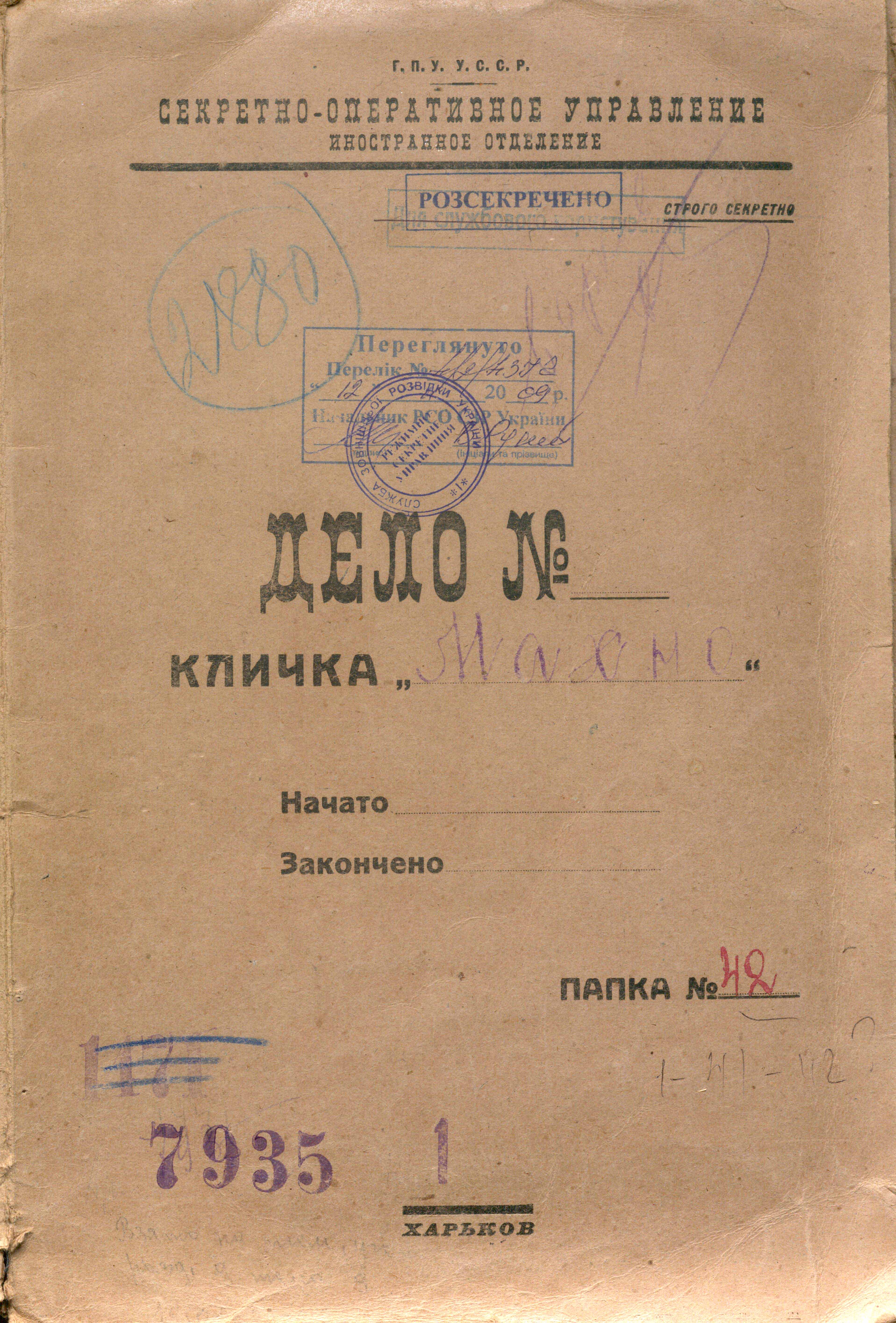
In fact, all these rumors were groundless. In the early 1930s, interest in Makhno waned somewhat. He then lived in Vincennes, a town near Paris, was often ill, lived on occasional earnings, and focused mainly on writing memoirs and seeking funds to publish them. One of the archival documents entitled “On Makhno’s Place of Living and Activities” from October 11, 1931 reads: “As of September 30, this year, Makhno is in Paris. A few months ago, Makhno desperately needed a job as a painter to paint one of the houses on Raspay Boulevard ”(BSA of the SZR of Ukraine. - F. 1. - Case 7935. - Vol. 1. – P. 51). Another document from the Paris residentura states that Makhno worked as an assembler at the Colonial Exhibition from Reno- the job he got with the help of a former officer Kryukov, who holds a responsible position at Reno.
A document dated November 20, 1931, states that “the financial situation of the entire Parisian group of anarchists is quite difficult. Neither Makhno, nor Volyn, nor Arshinov have money”. Makhno, in particular, is reported that “he is also unemployed and actually lives at the expense of his wife, who works in one of the families as a house keeper”. And the document ends with the phrase: “Makhno's financial situation is so tough that he is dreading eviction from the room due to non-payment” (BSA of the SZR of Ukraine. - F. 1. – Case 7935. - Vol. 1. - P. 65–66).

The case contains a paper from the Paris police about Makhno dated November 10, 1931, which reads: “Mikhnenko Nestor Ivanovych, known as Makhno, 40 years old, Diderot Street in Vincennes. Lives on the charities of anarchist activists. Cooperates with Liberter, in which on February 7, 1931 he published an article "Against Bolshevik Tyranny”. His roommate is Kuzmenko Halyna Andriivna, 35, in the past a school teacher from Russia”. (BSA of the SZR of Ukraine. - F. 1. – Case 7935. - Vol. 1. – P. 60).
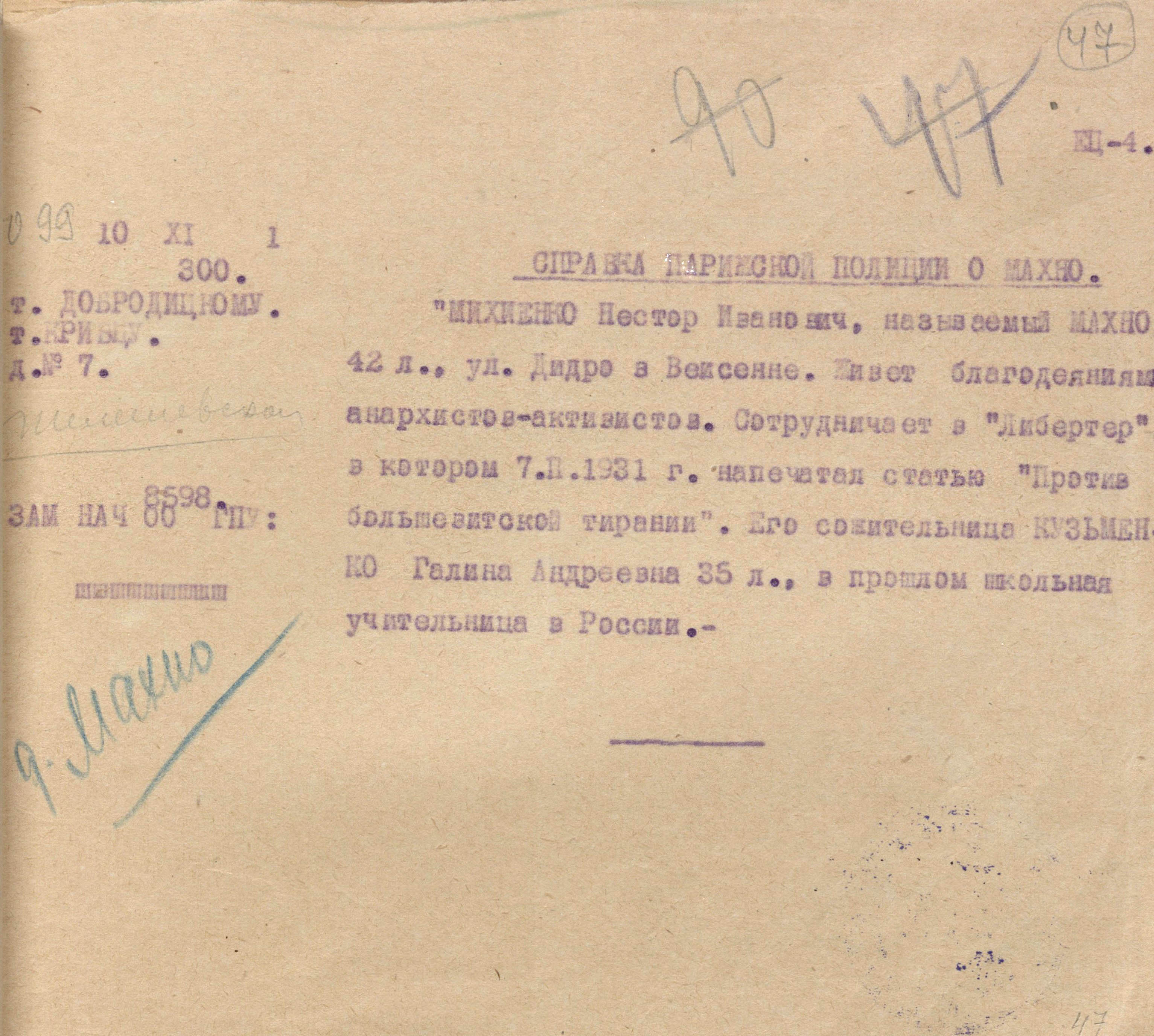
Nestor Makhno's political views at that time are eloquently evidenced by a document dated November 20, 1931, entitled “Besedovsky's Ties with Makhno”. Hryhoriy Besedovsky was a Soviet diplomat, in particular an Adviser to the USSR Embassy in France in 1927. In 1929, he fled the Embassy and applied for political asylum in France after an OGPU officer from Moscow came for a special interview with him. He feared that he would be arrested for embezzlement. He later tried to prove to his environment that he had suffered from the Stalinist regime. He then sought the support of representatives of numerous emigrant circles in Paris, including Nestor Makhno. According to the document, Makhno allegedly “helped to publish his memoirs and some stamps, such as “Conversation with Lenin”, “Hulyai- Pole”, etc.” He also supported Makhno financially –lent him 250 francs.
For some time, other individuals and political organizations also tried to take advantage of Makhno's past authority. “According to Makhno”, the same document reads, “Spanish anarchists count on his authority and sometimes turn to him for advice. For example, he recommended them to organize an anarchist movement in the peasant environment and to combine this movement on a federal basis with the labor movement. He even recommended to organize fighting units of peasants similar to the Makhnovists in Ukraine”. He considered the Bolshevik system to be strong enough and, according to the document, “is skeptical about all the childish initiatives of emigration aimed at hopeless attempts to invade Soviet territory”.
Makhno considered any such struggle with the Bolsheviks aimless and unnecessary. In his opinion, the administrative apparatus of the Soviet government penetrated so deeply into all spheres of life that it precluded the possibility of large partisan detachments operating in the country.
In the end, an unnamed source concludes: “Makhno gives the impression of a person who has long since weathered his ataman passion, but still retains the popularity given by great upheavals” (BSA of the SZR of Ukraine. - F. 1. - Case 7935.– V. 1. - P. 49–51).
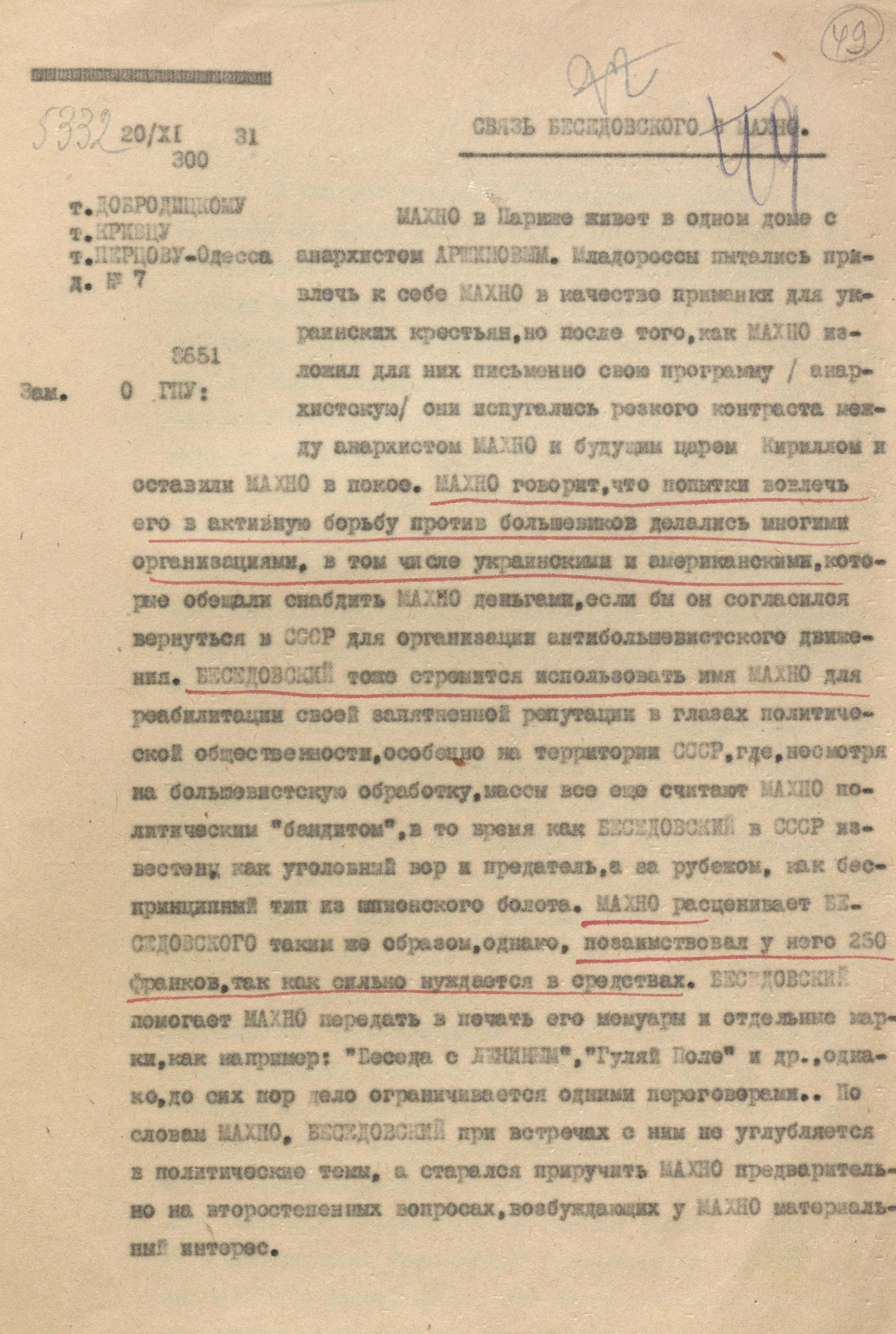
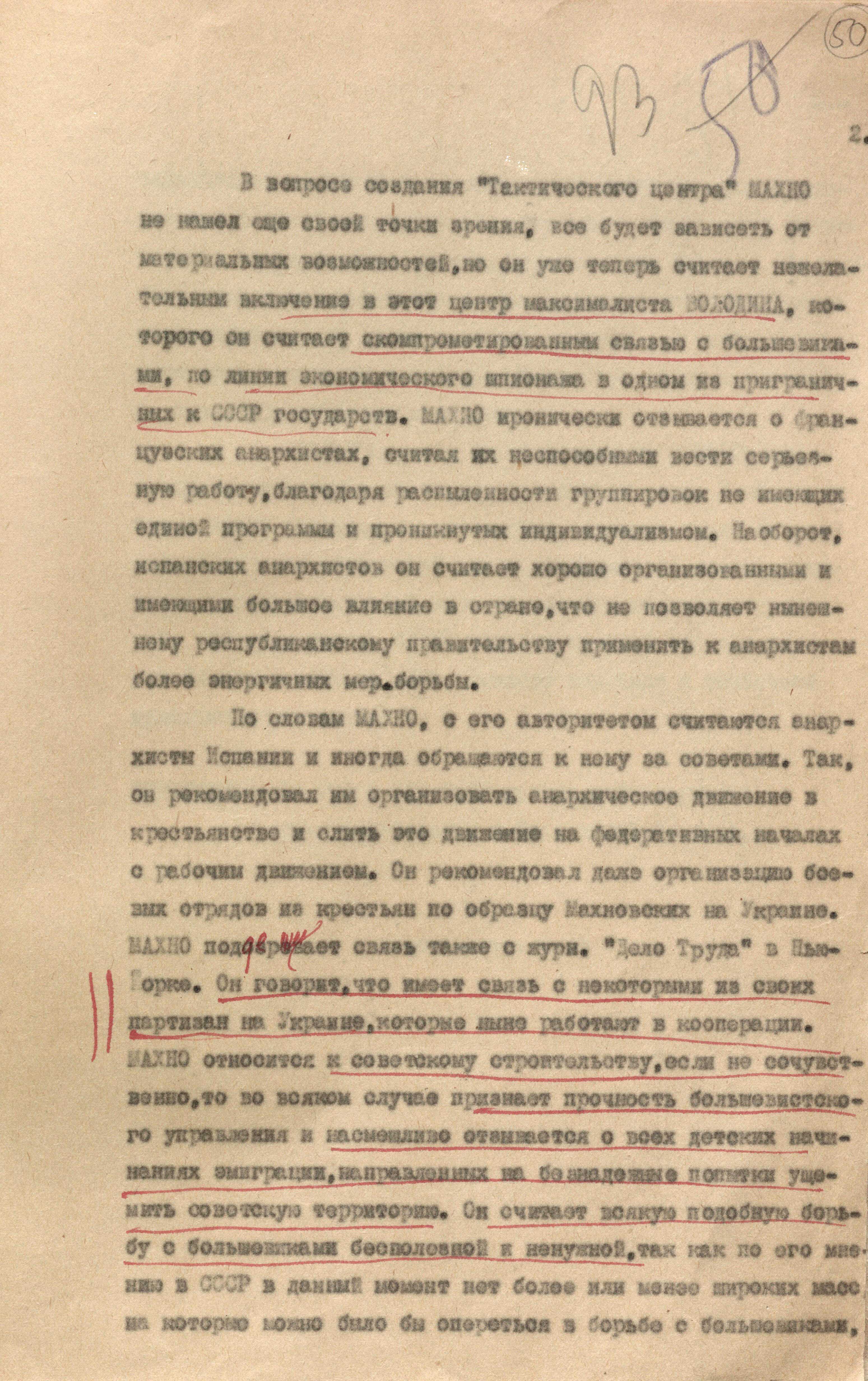
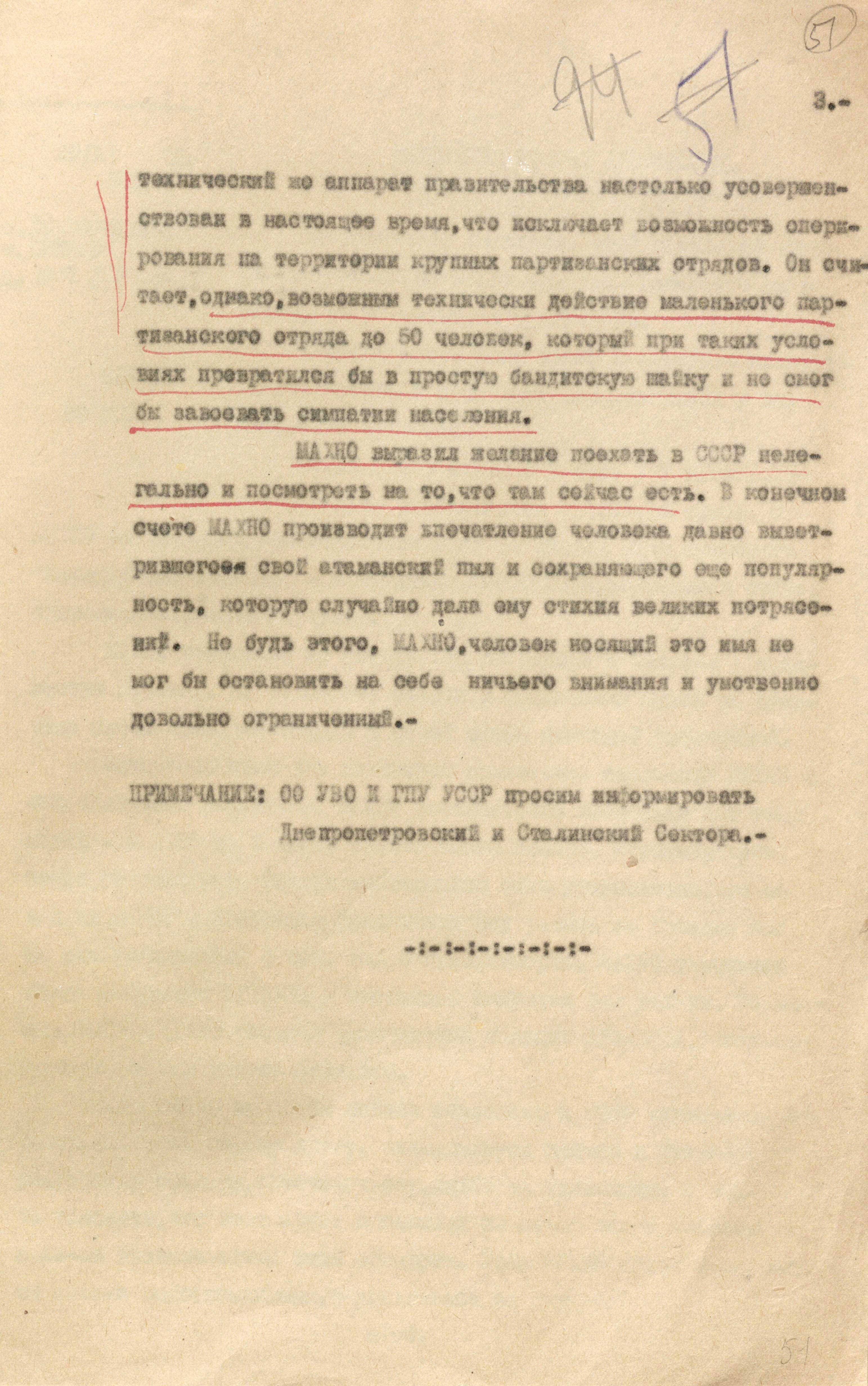
The Paris police paper mentions Makhno's wife, Halyna, as his roommate. At that time, they really had a difficult relationship. They no longer lived together. It is pointed out that they had different political views, in particular Halyna, in contrast to Nestor, allegedly began to be sympathetic to the Soviet system. One of the documents states that Dominika Kuzmenko, Halyna's mother, who at that time lived in the village of Pishchanyi Brid, Novoukrainskyi district, Odesa region (now Kirovohrad region), told her environment that her daughter had divorced Nestor.
The GPU closely monitored Halyna's correspondence with her mother and two brothers. In one of her letters to her brother Mykola, she announced that she intended to leave for America, and also asked that photos, books, paintings, and letters be carefully kept at home, saying that “all this will be valuable material for historians and the museum in the future”. She also asked “How many schools are there in our village today? What buildings have been built in the village after the revolution? Is there electricity, paved roads, movies, cars, etc. in the village? Will we catch up and overtake America? ” (BSA of the SZR of Ukraine. - F. 1. – Case 7932.– V. 1. - P. 33).
Similar questions were asked by Makhno in his letters to comrades who lived in Hulyai- Pole, in particular to Adjutant Ivan Lepetchenko. Lepetchenko was part of a small group with which Makhno moved to Romania in August 1921. He was loyal to his Otaman. Not surprisingly, it was Makhno who gave him the task of finding gold and other valuables hidden in the vastness of the Wild Field.
Employees of the GPU of the USSR learnt about these plans. Here is a message dated July 25, 1924 from a Warsaw resident to the GPU of the Ukrainian SSR: “… According to other Makhnovists and Khmarovites, Makhno trusted Lepetchenko and the latter performed the duties of his orderly (or rather, his servant). At the moment Lepetchenko has financial difficulties, as Makhno had left for Danzig having left him behind and he is unable to feed himself with his job(Prof. Shvets)…
In mid-July, this year, he met Chernyak (Warsaw anarchist), who invited him to go to Ukraine illegally to seize treasures that he, Lepetchenko, had once left behind on Makhno's instructions, and to transport them to Poland, as they were currently experiencing a financial crisis, for which he, Lepetchenko, will be given appropriate compensation. Lepetchenko agreed…”.
While crossing the border, Lepetchenko was detained and forced to show some places where Makhno's treasures, personal belongings and documents were hidden. Later, all his correspondence with Makhno was under the control of the GPU, and some of the letters were written by the adjutant at the dictation of the Chekists. Most of those letters were kept in the operational cases of the counterintelligence of the Ukrainian SSR. In the case of the Foreign Office of the SPU of the GPU of the USSR “Makhno” there is a so-called “cloth” - a note written by Nestor Makhno to his adjutant on a small piece of silk fabric. It reads as follows: “Ivan, send me photos of all our relatives - S. Karetnyk and others. All our leaflets, newspapers, should be wrapped up in large newspapers and sent to the address…” (BSA of the SZR of Ukraine. - F. 1. - Case 7932. - Vol. 1. – P.5).
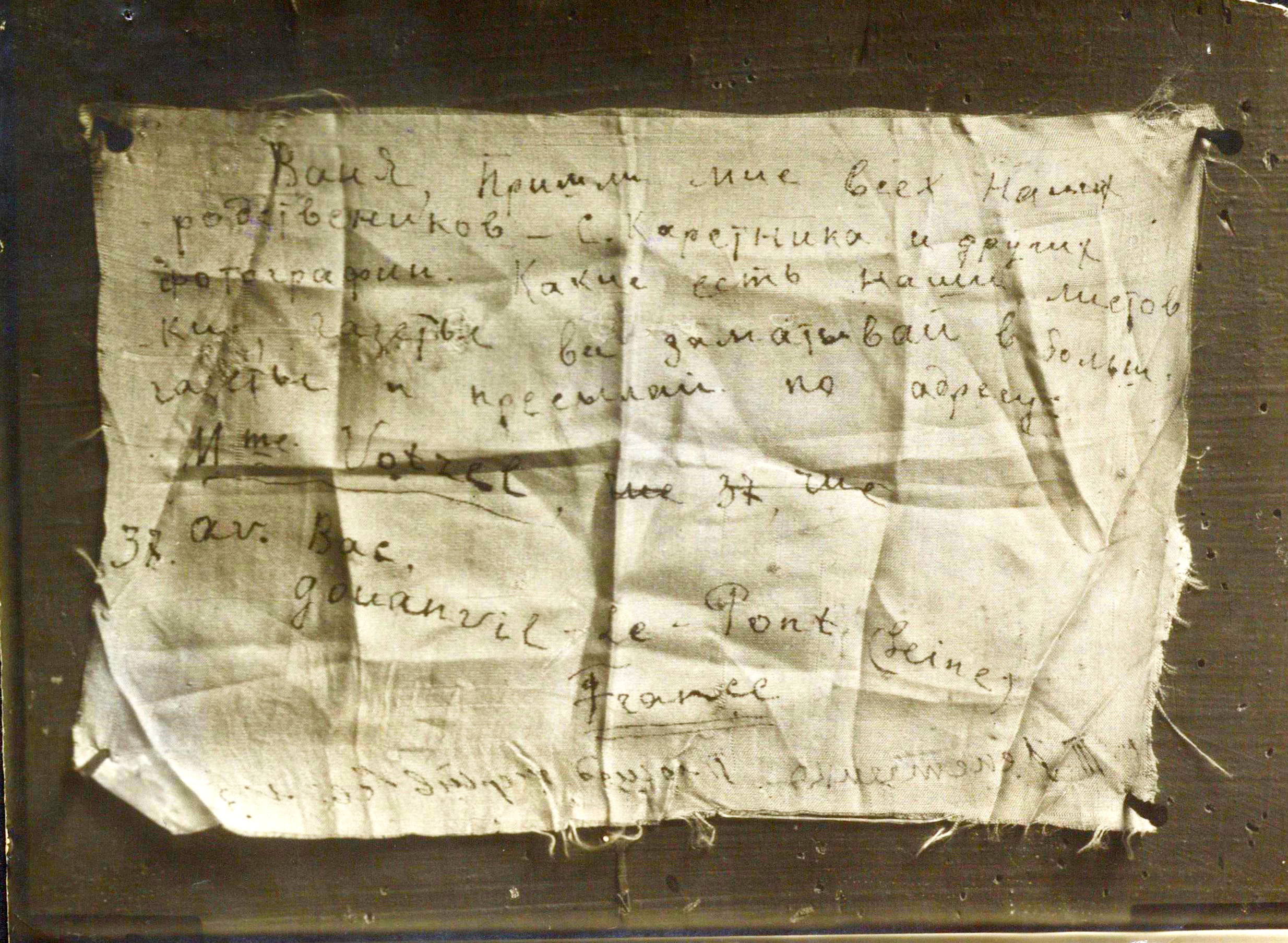
According to the case file, this note was brought from Makhno by an experienced ideological anarchist who spent 15 years in exile in America, Germany and France. He sewed the note under the lining of his clothes to cross the border safely. Before returning to the USSR in 1928, he received a number of instructions from Petro Arshynov and Nestor Makhno to restore ties with former anarchists and Makhnovists, Ivan Lepetchenko included. In the case file, he is referred to as “Volkovskyi”, whom the Chekists involved in cooperation and intended to use in the cultivation of Makhno, in particular to send with the task to France. But they never had a chance to.
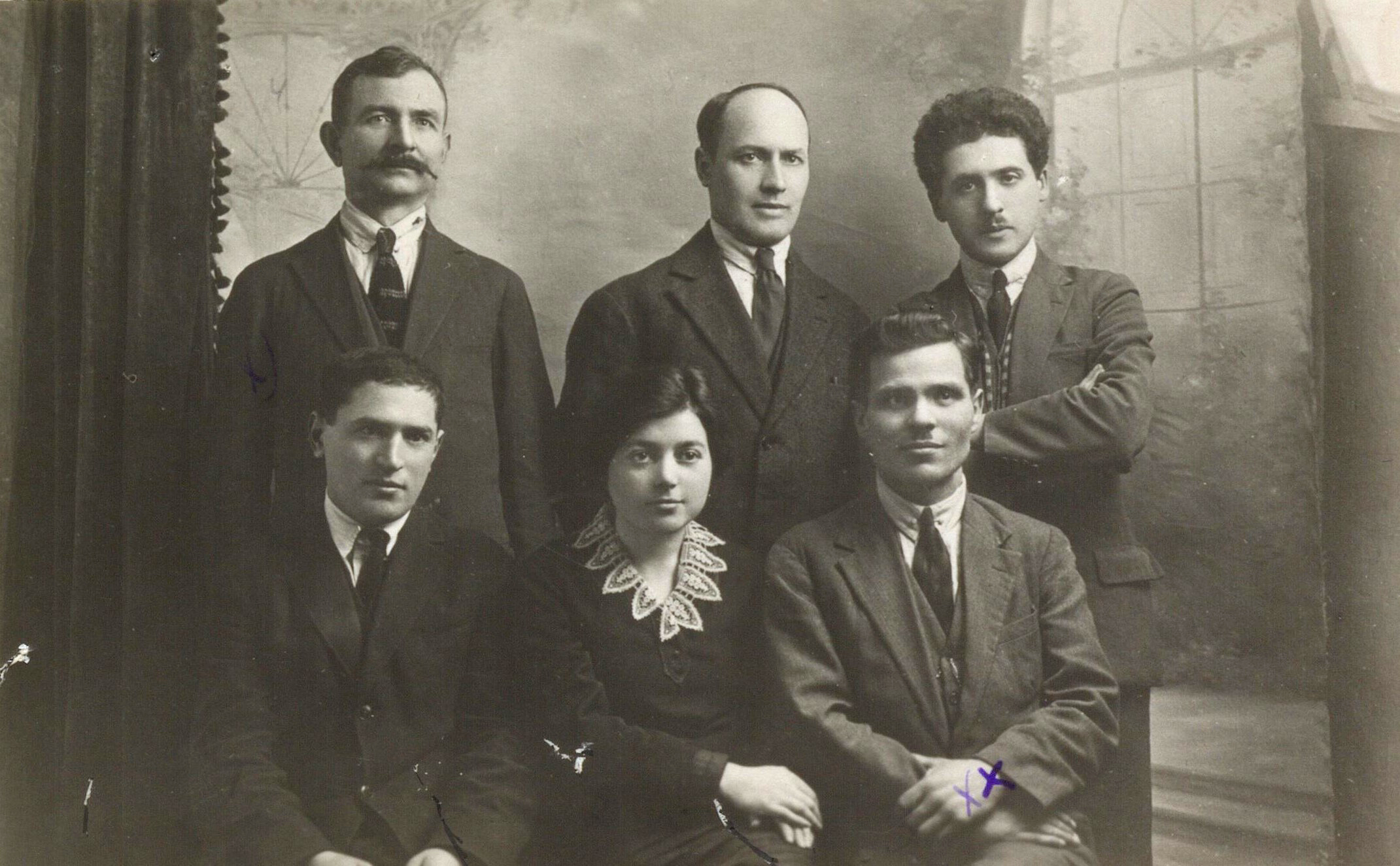
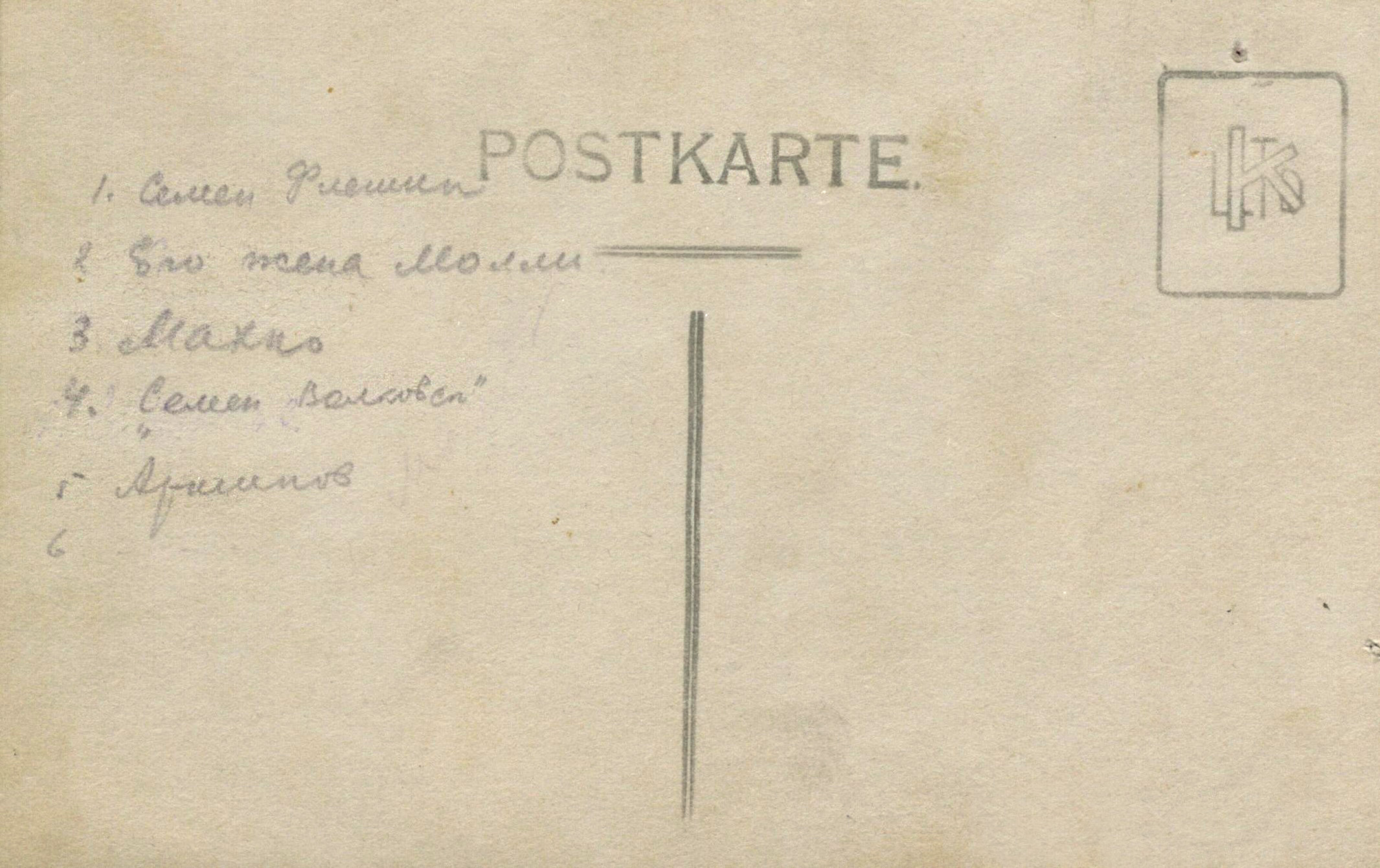
Like Volkovskyi, Makhno, while in exile, repeatedly considered the possibility of returning home. But each time he rejected such options as unrealistic. In a letter to Ivan Lepetchenko, he wrote that this was impossible because there was no guarantee that his life and freedom would be inviolable.
In 1934, after a serious illness, Nestor Makhno died. Most of his comrades, who had fled to Romania with him, remained abroad for the rest of their days. Some, unable to endure the hard and needy life abroad, returned home. But they did not find happiness and peace there.
The GPU-NKVD, fulfilling the will of the party, resolutely and consistently engaged in the destruction of Makhnovism as a phenomenon. The information and circular letter of the OGPU of the USSR № 34 “On Anarchists” pointed out: “Special attention should be paid to the struggle against the remnants of Makhnovism in Ukraine. Systematic work is needed to identify former Makhno’s army personnel, to show their anti-Soviet activities in the current period, and to remove those elements that are the organizers of anarcho-kulak groups in villages”.
Despite past amnesties for the Makhnovists, in 1937 many were reminded of their old “sins”. Former insurgent army chief Viktor Bilash was arrested and shot dead. As a Romanian and British spy, Lev Zinkovskyi-Zadov was shot dead in 1938. He led counterintelligence in Makhno's army during the last period of the armed struggle, and then served in the GPU-NKVD for 13 years, repeatedly awarded by his chiefs for conscientious work. Ivan Lepetchenko was repeatedly arrested in the 1930s. In October 1937 he was shot dead for “active counter-revolutionary activity”.
In the 1930s, Hulyai Pole and the surrounding districts of the Zaporizhia region allowed the repressive authorities to carry out and overfulfill plans for exposing “enemies of the people”. After all, tens of thousands of people served in Makhno’s army. As a result, many of them were placed on lists of the unreliable during the years of totalitarianism, shot dead or sentenced to long terms of imprisonment.
Nestor Makhno's followers were monitored by the NKVD-MGB-KGB in all subsequent years, until the collapse of the USSR. Such were the ideological guidelines of the Communist Party, and the secret services, together with the law enforcement agencies, strictly followed them. This is evidenced by one of the last documents attached to the case. A coded telegram from the Department of the KGB of the Ukrainian SSR in Zaporozhye region to the chief of the 1st Directorate (Foreign Intelligence) of the KGB of the Ukrainian SSR dated August 28, 1989, reads: “On the instructions of the party organs with the aim of disrupting the planned celebration by the anarcho-syndicalists of the 100th anniversary of the birth of the leaders of their gangs Makhno Nestor Ivanovych, we are preparing documents exposing the crimes committed by him during the Civil War and after it. Please send your instructions to our address for familiarization with materials about Makhno, available in Group 10 of the Directorate” (BSA of the SZR of Ukraine. - F. 1. – Case 7932. - Vol. 1. - P 78).
The answer from Kyiv was laconic: there are no such documents in the Directorate. And in a separate paper, written by the chief of Group 10, it is stated that the materials on Makhno were reported to the Chief of the Directorate t and the Deputy Head of the KGB of the Ukrainian SSR and instructions have come not to “give anything to anybody without their permission”.
Despite the fact that the case file does not contain documents that would show that Makhno committed any crimes, in 1989 some heads of the secret service, as evidenced by the decision made in Kiev, already had an understanding that the situation in the world and in the USSR had changed dramatically and it was impossible to act according to the old standards. The process of rehabilitating victims of political repression soon began. Thousands of Makhnovists sentenced for anti-Soviet counterrevolutionary activities or as Romanian, Polish, and German spies were rehabilitated.
In modern times, the figure of Makhno and the role of the peasant insurgent movement led by him in the Ukrainian Revolution of 1917–1921 have undergone a significant rethinking, about which much has already been written. At the same time, documents from the archives of the Intelligence make it possible to shed light on some episodes of another ( the least researched and studied) foreign period of the insurgent Otaman's life.
